The Best Bang for Your Buck
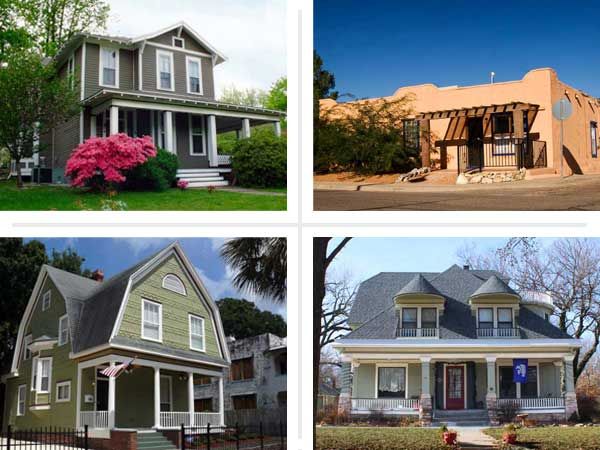
We know a bargain when we see one. Whether they need repairs or are simply a bit off the beaten path, the houses in these areas will have budget-minded buyers scrambling for their checkbooks. And they’re just a few of the 61 vibrant neighborhoods from coast to coast where you’ll find one-of-a-kind period houses. Read on to see which areas offer a good quality of life at a great value, or see all the neighborhoods and categories.
Norwood, Birmingham, Alabama
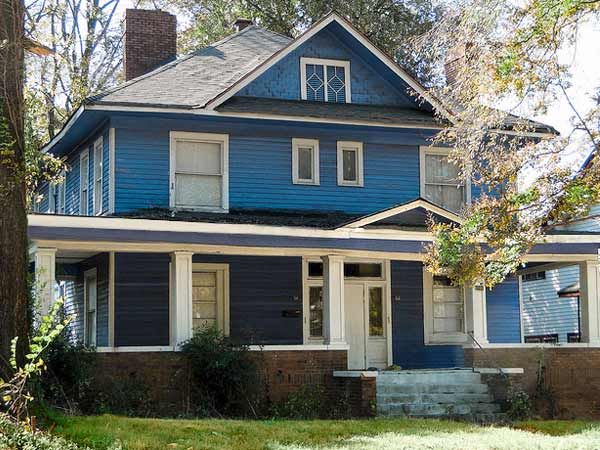
Population: 3,510 in Norwood; 212,413 in the city of Birmingham
House styles: Craftsman, American Foursquare, Neoclassical, Prairie, and various Victorian-era styles
Expect to pay: From $20,000 and up for a fixer-upper; move-in-ready houses can cost $120,000 or more
Only a mile and a half north of downtown Birmingham, Norwood was built as a streetcar suburb in the early 1900s and flourished during the first half of the century. But by the end of the 1900s, many of its mansions and historic properties were in tough shape, thanks to decades of urban flight and the neglect of absentee landlords. Since then, lured by low prices and diverse house styles, young couples and professionals with families began buying homes and fixing them up. And their investment has paid off; the area received historic designation from the city of Birmingham in 2012. Locals are now building on the area’s shiny new image, turning three vacant lots into community orchards and gardens, and hosting a weekly farmers’ market along the serpentine Norwood Boulevard, which winds through the neighborhood. But the most popular outdoor space nearby is the award-winning Railroad Park, nicknamed Birmingham’s Living Room. Built along a former rail viaduct, the park boasts nine acres of lush lawn, along with walls and seating areas made partly from bricks and other materials unearthed during its construction. Here, you can find the perfect spot to sit for a spell before wending your way home.Among the best for: The South, Bargains, Cottages and Bungalows, Easy Commute, First-Time Buyers, Gardening
Garfield Neighborhood, Phoenix
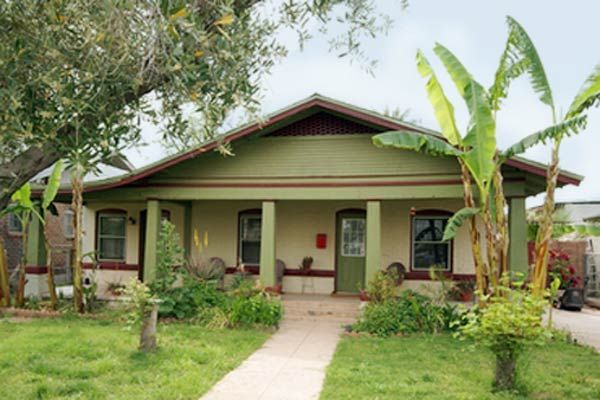
Population: Approximately 2,100 in Garfield; nearly 1.5 million in the city of Phoenix
House styles: Revival styles from the late 19th and early 20th centuries, Craftsman, and vernacular bungalows and ranches
Expect to pay: As little as $50,000 for a short-sale fixer-upper; around $150,000 for a fully rehabbed house
This one-square-mile neighborhood comprises Garfield and North Garfield, two of the largest historic districts in Phoenix; both have been on the National Register since 2010. They date back to the 1880s (the beginning of time around these parts) and were early additions to the old Phoenix townsite. Today it’s an easy stroll down their streets to downtown attractions, such as Symphony Hall or the Roosevelt Row Arts District, top-notch restaurants and taco trucks, the new city-center campuses of Arizona State University and the University of Arizona, and Phoenix’s Valley Metro Light Rail. The locals, a mix of Hispanic families and artistic types, recently created Garfield Community Garden, where neighbors meet on Sundays to sow seeds, pull weeds, and swap all sorts of green-thumb expertise as they raise veggies to distribute to needy communities. The homes here aren’t manses—you won’t find many original houses over 1,200 square feet—but a wee bungalow or cottage needing care can be had cheaply, and the City of Phoenix has funds available for those who are restoring historic properties.
Among the best for: The West, Bargains, Fixer-Uppers, College Towns, Easy Commute, Retirees, First-Time Buyers, Walkability, Gardening
University District, Greeley, Colorado
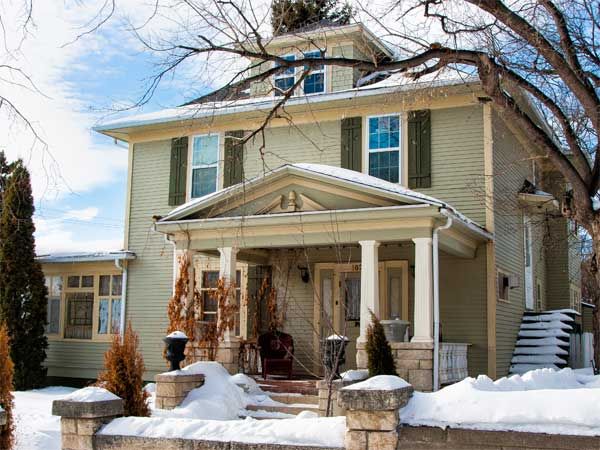
Population: 11,000 in University District; 95,000 in the city of Greeley
House styles: Queen Anne, Italianate, Tudor Revival, Colonial Revival, American Foursquare, Craftsman bungalow, and ranch
Expect to pay: A modest ranch needing some work might go for $60,000, while a fixer-upper Queen Anne or Tudor Revival could cost $225,000. Restored properties top out at $450,000, but most cost a lot less
A decade ago, downtown Greeley had a lot of empty storefronts—so many that this city an hour north of Denver was on Colorado’s Endangered Places list. But thanks to a partnership between the City of Greeley and the local Downtown Development Authority—and an outpouring of pride (and paint) from residents young and old—Greeley got a shot in the arm and businesses returned to the area. This renewed vibrancy has extended to Greeley’s University District, about three blocks south of downtown. The area, which circles the University of Northern Colorado campus, has more than 3,800 residential structures on wide streets. Its six distinct neighborhoods feature a diverse range of house styles and sizes, from ornate, turreted Tudor Revivals to more modest bermed-earth homes, cottages, and Craftsman bungalows. Houses date back to 1870, though most were built between 1900 and 1940. Its quiet streets, abundance of local shops, and access to the resources of a major public university make this neighborhood, along with its gorgeous home stock, a true find.
Among the best for: The West, Bargains, Cottages and Bungalows, Victorians, College Towns, Retirees, Family-Friendly, Walkability
Norwich, Connecticut
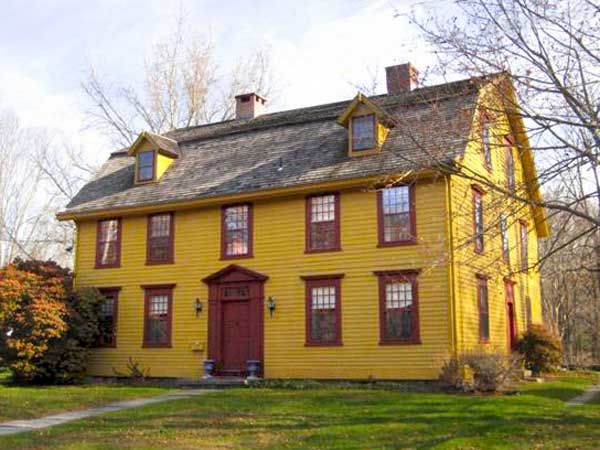
Population: 40,493
House styles: Colonial-era and Colonial Revival houses predominate, with a sprinkling of Georgian, Greek Revival, and Craftsman
Expect to pay: Modest houses and fixer-uppers are available for under $75,000; larger, renovated dwellings, and houses in the designated historic district, typically go for about $250,000
We’re not gambling types, but we’d bet on this history-laden city as a smart place to make an investment. Founded by English colonists in 1659, the former mill city and shipping hub has weathered the economic downturn well compared with many other cities in The Nutmeg State. That’s partly due to its proximity to New London and Hartford—both under an hour away—and because of the Foxwoods and Mohegan Sun casinos, steady employers that are each just a 10-minute drive. Not that an abundance of riches, from architectural to recreational, is anything new to residents here. Well-maintained historic houses and public buildings abound, including five that are on the National Register of Historic Places; many of the older houses are concentrated in the neighborhood known as Norwichtown. The nearby Veterans Memorial Rose Garden, which boasts some 2,500 bushes in 120 varieties, is located within Mohegan Park, a popular spot for swimming, fishing, and picnicking. And downtown, the Marina at American Wharf offers casual and fine dining opportunities for boating fans and landlubbers alike. If you’re looking to relocate to a New England town with affordable houses and plenty to do, this place may hold all the cards.
Among the best for: The Northeast, Bargains, First-Time Buyers, American Heritage
Springfield Neighborhood, Jacksonville, Florida
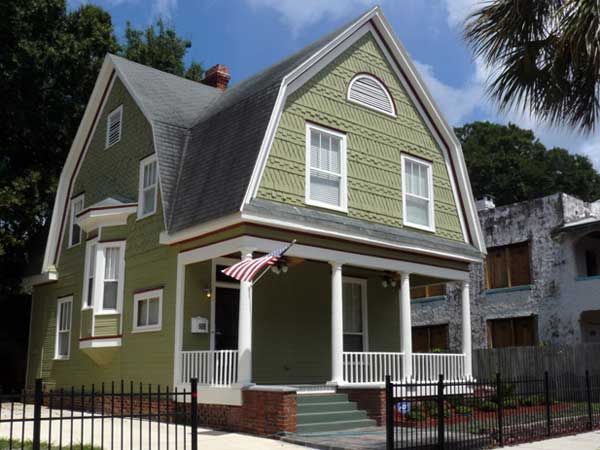
Population: 4,674 in Springfield; 827,908 in the city of Jacksonville
House styles: Early-20th-century types, such as Colonial Revival, Prairie, and Craftsman predominate here; also Queen Anne and various vernacular styles
Expect to pay: As little as $40,000 for a fixer-upper; up-to-date houses cost about $250,000 to $275,000
In 1901, nearly 150 city blocks in downtown Jacksonville were consumed by a factory fire, and many displaced residents fled to Springfield. The community thrived through around 1925, but a combination of urban flight and the area’s rezoning as a business district caused many houses in the neighborhood to decline. Thankfully, locals turned the tide and snagged the area a listing on the National Register of Historic Places in 1987. Today’s buyers will find a charming mix of residences here from as early as the late 1800s, with some cafes and small businesses scattered within walking distance. “There’s an incredible community spirit here,” says resident Kathleen Carignan, who moved to Springfield in 2012. “I found out one of my neighbors had been mowing my lawn before I moved in just because he wanted it to look nice.” City Kidz, a local ice-cream shop, holds after-school workshops to teach financial literacy and entrepreneurial skills, and a program at one of the neighborhood’s two community gardens educates kids about sustainable-food and gardening practices. To us, it sounds like a great place to be a kid or a grown-up
Among the best for: The South, Bargains, Fixer-Uppers, Easy Commute, Retirees, Walkability, Gardening
Bronzeville Neighborhood, Chicago
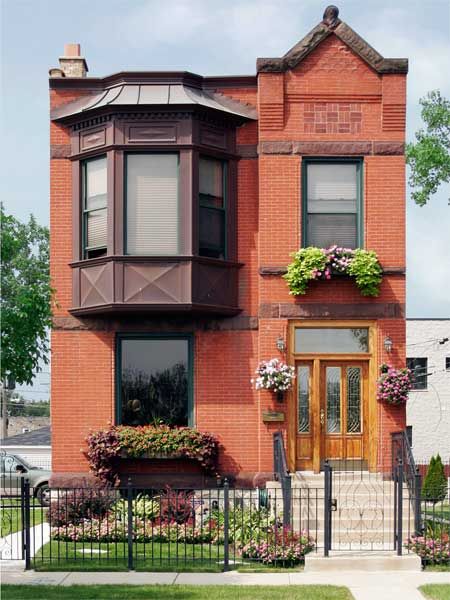
Population: 4,566 in Bronzeville; 2,707,120 in Chicago
House styles: Most period houses date from 1881 to 1910 and include Queen Annes and Richardsonian Romanesques; they’re built largely from stone, a legacy of the Great Chicago Fire of 1871
Expect to pay: About $50,000 for a fixer-upper; $275,000 and up for a refurbished home
When Southern blacks migrated north in search of work in the early 20th century, thousands settled in this community on Chicago’s South Side. In time, Bronzeville became a hotbed of activists, musicians, artists, and writers whose work has shaped the African-American urban experience, including such luminaries as Richard Wright, Louis Armstrong, Lorraine Hansberry, Muddy Waters, and Buddy Guy. But throughout the 1960s and 1970s, many residents of its high-rise public housing left to find less-crowded quarters in the suburbs. Thankfully, the neighborhood’s landscape began shifting from the mid-1990s through 2007, when these neglected projects were torn down, paving the way for smarter development and the refurbishment of its rich stock of period houses, most of which predate the Great Migration.
Today, middle-class black families are moving back Bronzeville to reclaim it as a historic, urban neighborhood, and bus tours make the rounds to its many points of interest, including trails for the Underground Railroad. From here, you can get to the center of the downtown Loop by car in less than 15 minutes or by riding the elevated train’s Green Line; since 2011, there’s been a stop here for a commuter train that connects the city to its southern suburbs. And it’s just a short bike ride or walk to many of the Windy City’s A-list attractions, including the Art Institute, the Museum of Science and Industry, and Lake Michigan. Sweet home Chicago, indeed.
Among the best for: Editors’ Picks, The Midwest, Bargains, Victorians, Easy Commute, First-Time Buyers, American Heritage
Franklin, Indiana
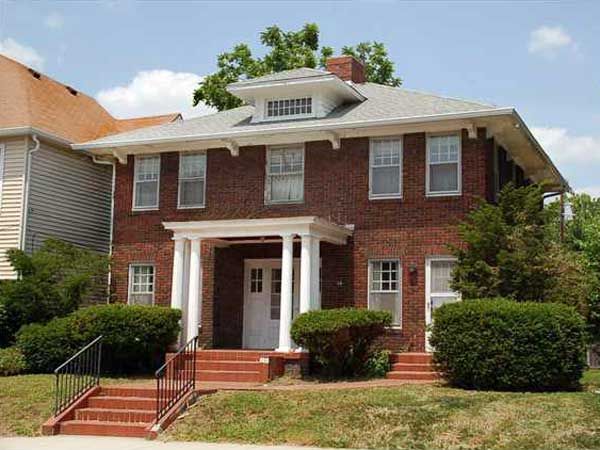
Population: 24,040
House styles: Greek Revival, Colonial Revival, Italianate, Queen Anne, American Foursquare, and Craftsman bungalow
Expect to pay: $55,000 for a fixer-upper; $285,000 for a fully restored home
This quaint bedroom community an hour and a half north of Louisville, Kentucky, was founded in 1823 as a log-cabin settlement and took off in the 1840s when railroad travel linked it to Indianapolis some 20 miles away. Franklin College emerged a decade later, eventually becoming the first coeducational college in the state. Just 10 years ago, though, the town center was littered with empty storefronts and vacant period homes. So several nonprofits and local merchants banded together to lure residents and businesses back to downtown. Their efforts have paid off: Renovations by committed homeowners are underway throughout the historic residential areas, and the revived downtown area, primarily along Main Street and Jefferson Street, boasts new restaurants and shops. In true Americana form, Franklin holds a strawberry festival in May, a barbecue competition in June, and a beer-and-bluegrass festival each August, offering foodies a bevy of events to feast on. And at the 90-plus-year-old Historic Artcraft Theatre, which began its life as a silent-movie theater and vaudeville house, you can watch classic films while having snacks—including popcorn made from local corn—delivered seatside.
Among the best for: The Midwest, Bargains, College Towns, Small Towns, Family-Friendly
College Hill Neighborhood, Topeka, Kansas
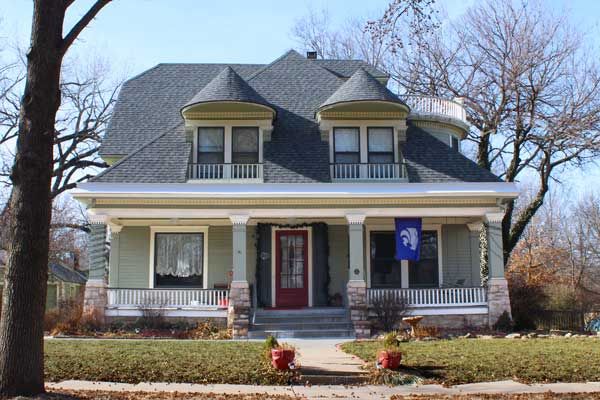
Population: 1,558 in College Hill; 128,188 in the city of Topeka
House styles: The most common type is the so-called airplane bungalow, a vernacular style named for a feature that resembles a cockpit: a “pop-up” level above the main floor that contains a sleeping porch for hot summers
Expect to pay: About $70,000 for a fixer-upper; nicer houses clock in at about $150,000
For decades, Topeka suffered from an identity crisis, finding itself as the butt of many a “How boring is it?” joke from fellow Kansans. But locals have begun grass-roots redevelopment efforts to change the narrative, and College Hill is one of their success stories. This leafy, friendly enclave just north of Washburn University has about 600 bungalow-style homes dating from the early 1900s, and no two are exactly alike. “You see something unique at each address,” says Brendan Jensen, president of the College Hill Neighborhood Association. Residents include young couples taking advantage of the area’s affordable housing, as well as law students and professors who can walk to campus. Small businesses are sprouting up in the ground-level retail spaces of the multifamily College Hill Lofts, and you’ll find kids playing soccer in Boswell Square Park, a community green space created after the demolition of a junior high school in the early 1980s. The neighborhood association sponsors community events year-round, such as a chili feed in January, a Fourth of July parade, and an annual Christmas light contest. For those who think Topeka is still a snore, the joke’s on them.
Frogtown, St. Paul, Minnesota
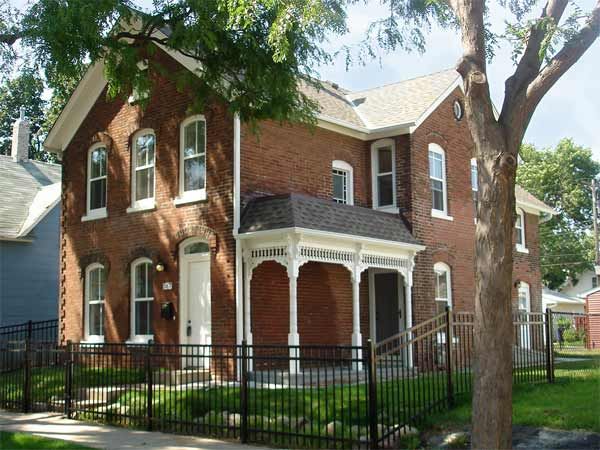
Population: About 15,000 in Frogtown; 288,448 in the city of St. Paul
House styles: Colonial Revival, Queen Anne, Craftsman, Prairie, Italianate, and Tudor Revival
Expect to pay: $40,000 or higher for a fixer-upper; about $140,000 for a restored home
Frogtown was built by German-Bohemians in 1860 on land just south of swampy Lake Lafond, where the croaking and chirping of its namesake amphibians was so loud at night that the locals called the area Froschburg (“Frog City”). Always a working-class immigrant community, many of its period houses were built in the 1880s and 1890s by early residents, the highly skilled masons and builders who also worked on mansions in St. Paul’s more affluent neighborhoods. It’s still populated by lower- and middle-income residents, albeit largely of Hmong, Cambodian, and Vietnamese descent, and the number of citizens who hail from Somali and Karen is growing. Not surprisingly, University Avenue, the main commercial strip, has a lively mix of ethnic restaurants and is the center point of the Green Line, a light commuter rail opening in 2014 that will connect the downtowns of Minneapolis and St. Paul. Right now, the area’s modest-size houses are reasonably priced, and chances are you’ll find neighbors willing to lend a hand with your renovation. “Our goal is to preserve the area’s historic character while maintaining affordability,” says Tait Danielson-Castillo, executive director of the Frogtown Neighborhood Association. As locals like to say, “Frogtown is a place to start, and a place to stay.”
Among the best for: The Midwest, Victorians, Easy Commute, Family-Friendly, First-Time Buyers, Walkability
Pendleton Heights, Kansas City, Missouri
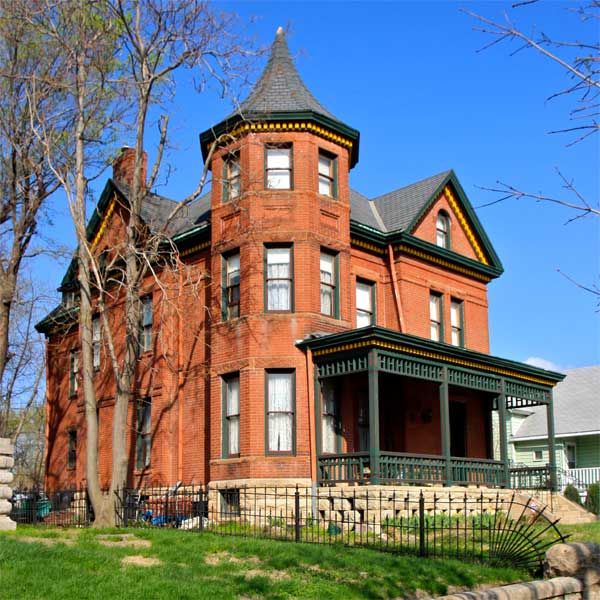
Population: 3,668 in Pendleton Heights; 463,202 in the city of Kansas City
House styles: Queen Anne, Richardsonian Romanesque, Shingle style, and Folk Victorian; there’s also a sprinkling of Italianate, Craftsman, and other styles.
Expect to pay: As little as $30,000 for a small fixer-upper; larger, move-in ready houses can cost $250,000 or more
Ask just about anyone in Pendleton Heights, and they’ll tell you that they moved here for the beautiful Victorian-era architecture, affordability, or the five-minute drive to downtown but stayed for the sense of community. Residents sit on their front porches, stop one another on the street to chat, and share house keys. Maple and Kessler Parks constitute about one-third of the neighborhood’s footprint—one of the largest green-space percentages in the city—and the local community garden is a popular, informal gathering spot where neighbors sow veggies side by side. But for those who aren’t ready to leave the city’s nightlife behind, it’s a five-minute drive to the new Power & Light District, an eight-block downtown area with more than 50 restaurants, bars, shops, and entertainment venues. Originally developed as Kansas City’s first suburb, the neighborhood is filling up with artists, singles, and young families leaving their converted-warehouse lofts downtown for more breathing room. Kansas City, here we come.
Among the best for: The Midwest, Bargains, Victorians, Easy Commute, First-Time Buyers
The John S. Park Historic District, Las Vegas
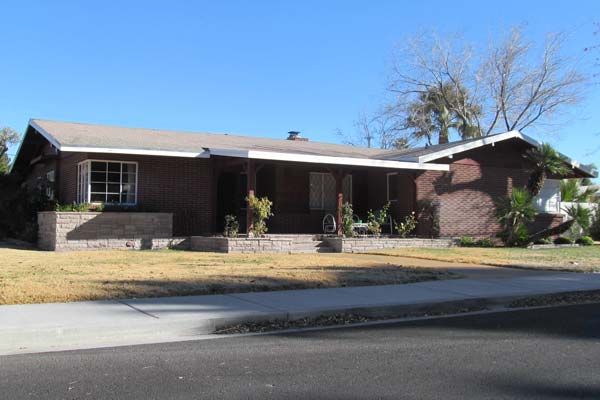
Population: 2,196 in John S. Park; 583,756 in the city of Las Vegas
House styles: Revival styles from the 1930s, ranches built during the post–World War II era, and mid-century modern
Expect to pay: From $80,000 to $250,000, depending on condition; most houses come on the market as fixer-uppers
In 1999, this neighborhood a mile southeast of the neon-lit streets of downtown Las Vegas made headlines when residents banded together to defeat a developer’s proposal to build a cruise-ship-shaped, Titanic-themed hotel just west of the area. The John S. Park Neighborhood Association has worked tirelessly since then to preserve the area’s low-rise, mid-century charm; among other victories, they successfully lobbied to create a 60-foot height cap on all new construction in the area. Most of the houses here were built between 1931 and 1956 and are far from cookie-cutter. “There’s a range of styles, and even those of the same style are not built exactly alike,” says Jack Levine, a local Realtor who has noticed a recent influx of artists, musicians, and young professionals. With its idyllic, tree-lined streets and namesake neighborhood pocket park, buyers won’t even know they’re practically in the middle of Sin City.
Among the best for: The West, Bargains, Fixer-Uppers, Easy Commute, Family-Friendly, First-Time Buyers
Mesquite Street Original Townsite Historic District, Las Cruces, New Mexico
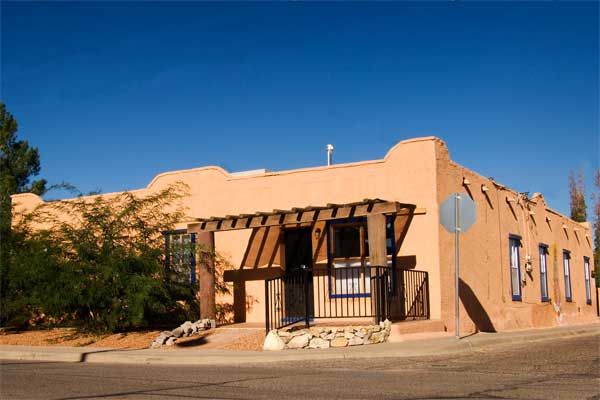
Population: 97,618 in the city of Las Cruces
House styles: New Mexico vernacular styles, Spanish Pueblo Revival, and Mission Revival
Expect to pay: Fixer-uppers start around $40,000; renovated houses top out at about $200,000
This up-and-coming neighborhood two blocks from downtown Las Cruces is still home to descendants of some of the area’s original settlers, who drew lots from a hat to determine the land they would own when the city was mapped out in 1849. Most of the period houses are clad in that Southwestern go-to material, adobe. Many of them have seen better days, but owners have been steadily transforming them over the past decade. Locals describe their neighbors as a close-knit bunch. “People talk to each other over their fences and greet their friends when they’re in line at the grocery store,” says resident Lorrie Meeks. Las Cruces is a college town (home to New Mexico State University) that’s known for good public schools; steady employment, thanks to two nearby military facilities; and cultural events, such as September’s Whole Enchilada Fiesta, during which a local chef cooks up a huge version of the festival’s namesake each year. And the city’s perpetually blue skies—it has an average of 350 sunny days per year—have made it an increasingly popular place for seniors to settle.
Among the best for: The West, Bargains, Fixer-Uppers, College Towns, First-Time Buyers
Newburgh, New York
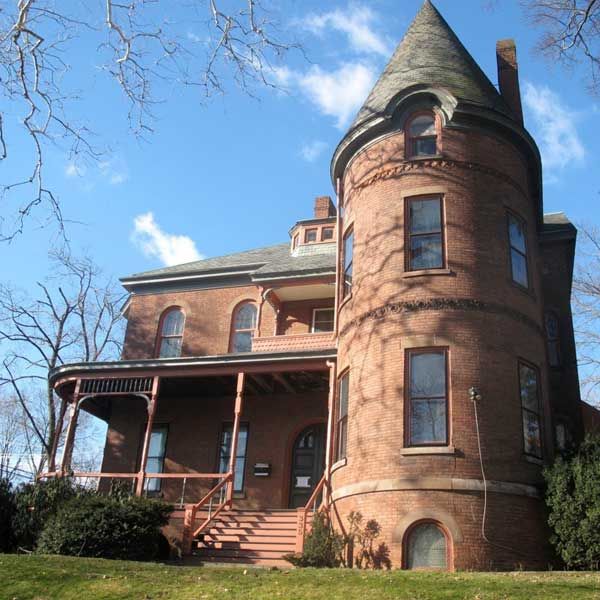
Population: 28,651
House styles: Queen Anne, Italianate, Federal, Second Empire, Colonial, Tudor, Craftsman, American Foursquare, and rowhouses
Expect to pay: Well under $100,000 (even under $25,000!) for a dilapidated attached house or a carriage house on a less desirable block; less than $400,000 for a renovated Victorian mansion in the main historic district
In Newburgh, just 60 miles from New York City and accessible by ferry, bus, or train, it’s possible to buy a turnkey house—even a 5,000-square-foot restored period mansion with Hudson River views—for less than $80 per square foot, an unheard-of bargain in the area. But a troubling crime rate, talk of ballooning taxes, and suspicion of corrupt city management have discouraged many buyers. Still, those who own houses here insist that the city’s worst days are in the past. “There’s a lot of fear-mongering,” says Chris Hanson, a local broker, who’s restoring a seven-bedroom house he bought in 2011 for $210,000. The place where Thomas Edison built one of the world’s first central electric stations is a veritable style show of American architecture—particularly in the East End Historic District, which features work by vaunted architects Calvert Vaux, Thornton Niven, Stanford White, and others. Local blog Newburgh Restoration chronicles the city’s revitalization efforts and new business endeavors, which have picked up pace in the past couple of years. For DIY enthusiasts and pioneers who want to put down roots in up-and-coming areas, this city is absolutely worth a look.
Among the best for: The Northeast, Bargains, Fixer-Uppers, Victorians, Waterfront, First-Time Buyers, American Heritage
Oak Grove Residential District, Fargo, North Dakota
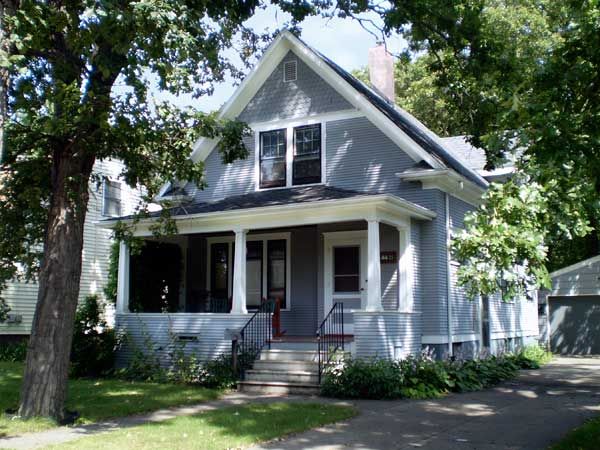
Population: 105,549 in the city of Fargo
House styles: Craftsman, Colonial Revival, and vernacular bungalows
Expect to pay: About $75,000 for a fixer-upper; as much as $130,000 for a move-in ready house
Nestled in the east edge of Fargo, Oak Grove was founded by working-class residents around 1895 and experienced significant growth in 1904, when an electric streetcar system connected it to downtown Fargo. The streetcars have long been a thing of the past, but most of the area’s pre-1950s houses are still in decent shape, though some workman’s specials can be found. One signature local style is the “mechanic’s cottage,” which features gable fronts, porticos, and other details inspired by Greek Revival houses, says Steve Martens, an architectural historian and a professor at North Dakota State University. Known as a family-friendly neighborhood, Oak Grove is surrounded on three sides by fields and parks, where residents can picnic, bike, play horseshoes, and enjoy the local playgrounds. Added bonus: Small-business owners get a big boost from Fargo’s population of nearly 30,000 college students, who fill area restaurants, shops, and pubs throughout the school year.
Among the best for: The Midwest, Bargains, Fixer-Uppers, Retirees, Family-Friendly, First-Time Buyers
Tacony Neighborhood, Philadelphia
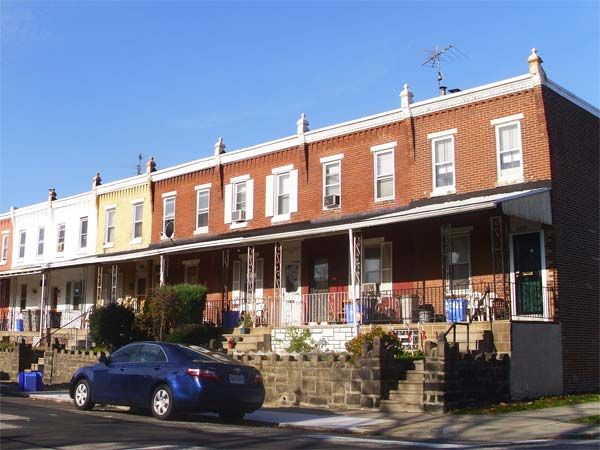
Population: About 6,000 in Tacony; approximately 1.54 million in the city of Philadelphia
House styles: Brick and wood-sided rowhouses, two-families, and large single-family houses in the Queen Anne and Georgian styles
Expect to pay: $40,000 and up for a rowhouse or $65,000-plus for a twin needing work. Single-family homes will set you back $125,000 to $200,000
This area has recently been touting its Hoagie Trail, a strand of sandwich shops packaged by the Historic Tacony Revitalization Project to highlight the spiffed-up main drag, Torresdale Avenue. And why not? The neighborhood was built on business. Sitting on the Delaware River seven miles northeast of Philadelphia’s city center, Tacony got busy in the mid-19th century with the arrival of the Philadelphia and Trenton Railroad and the 1854 Consolidation Act, which turned Tacony over to the City of Philadelphia.
Then along came Henry Disston, a manufacturer of saws. Over the next century, he and his descendants amassed 400 acres to create the Henry Disston & Sons company town, offering livelihoods and housing to employees at all levels. The company was sold in 1955, but the houses remain: some 1,400 “singles” (single family), “twins” (two-families), and rowhouses, built beginning in 1876. Many have pressed-metal accents, inlaid hardwood floors, open porches, and big yards. Though some properties in the area need work, you can still score a single-family fixer-upper for under $200,000 inside the city limits. We’ll bite.
Among the best for: The Northeast, Bargains, Fixer-Uppers, Waterfront, Easy Commute
Sioux Falls, South Dakota
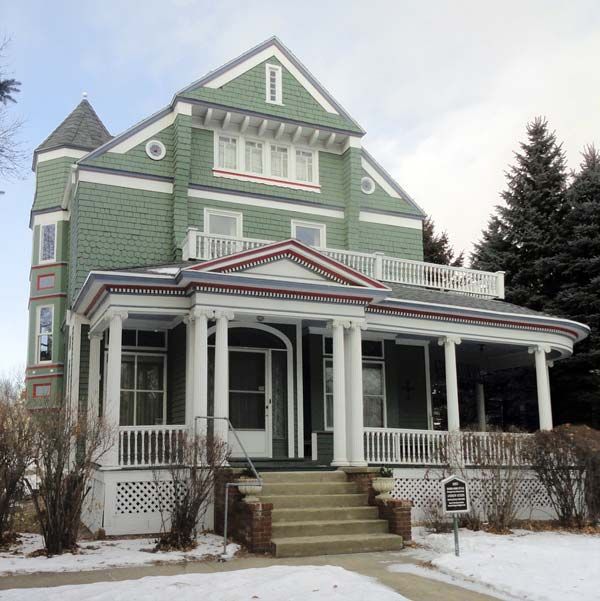
Population: 153,888
House styles: A mix from the late 1800s and early 1900s, including Italianate, Queen Anne, Colonial Revival, and Prairie
Expect to pay: As little as $80,000 for a small fixer-upper; a large, renovated house could cost upward of $600,000
Although an economic depression and, yes, a plague of grasshoppers threatened to ruin a booming Sioux Falls in the 1890s, South Dakota’s largest city eventually found its way back to prosperity. Today, its agricultural and quarry-based industries have given way to white-collar fields, such as health-care and financial services, and the city holds bragging rights to myriad awards for its thriving economy and low cost of living. The city has adapted to its growing population by adding amenities, such as a $115-million event center slated to open in 2014. But it has also maintained a strong sense of heritage; each summer, the outdoor SculptureWalk exhibit showcases new artwork focusing on historical events in South Dakota. And the Pettigrew Home & Museum, located in an 1889 Queen Anne that was once the home of the state’s first senator, hosts many events each year, including an open-house celebration featuring lawn games and rides in horse-drawn carriages. Period houses are concentrated in the heart of the city and range from small fixer-uppers to restored mansions from the late 1890s and early 1900s. And, surprisingly, many are still a bargain. Restore your dream home here and you might just win the mayor’s annual historic preservation award, given out each May.
Among the best for: The West, Bargains, Victorians, Family-Friendly, First-Time Buyers
St. Elmo Historic District, Chattanooga, Tennessee
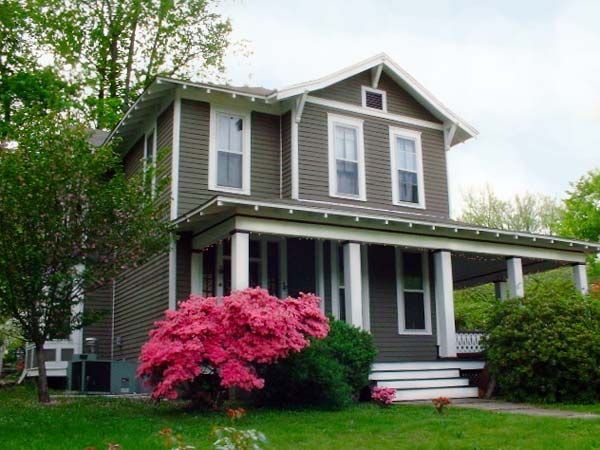
Population: 2,620 in St. Elmo; 170,136 in the city of Chattanooga
House styles: Large Folk Victorians and smaller Carpenter Gothic houses prevail, though there are also Queen Anne, Italianate, and other Victorian-era styles
Expect to pay: Houses that need work start at around $40,000; move-in ready houses top out at about $250,000
Founded during the urban exodus caused by the yellow fever epidemic of 1878, St. Elmo sits at the base of Lookout Mountain, just three and a half miles south of downtown Chattanooga. Its first residents built grand houses in various Victorian styles on large parcels of land up until about 1915; in the two decades that followed, smaller houses on smaller lots prevailed. Though its homes and buildings suffered from neglect when many residents left for the suburbs in the 1960s and 1970s, the neighborhood has been on an upswing. Today, owners of all ages and walks of life are restoring historic houses to their original splendor, and small businesses have been emerging in the commercial district built around the intersection of St. Elmo and Tennessee Avenues. Residents are eagerly anticipating the extension of the Tennessee Riverwalk to the area for the first time; this popular walking and biking trail runs through the city’s center, following the same path as the Tennessee River. And for serious outdoor enthusiasts, the network of trails on Lookout Mountain lets you get a healthy dose of exercise while taking in the panoramic views. Period houses here vary in size and price quite a bit—meaning it offers something for everybody.
Among the best for: The South, Bargains, Fixer-Uppers, Victorians, Retirees, Parks and Recreation
Glenbrook Valley Neighborhood, Houston
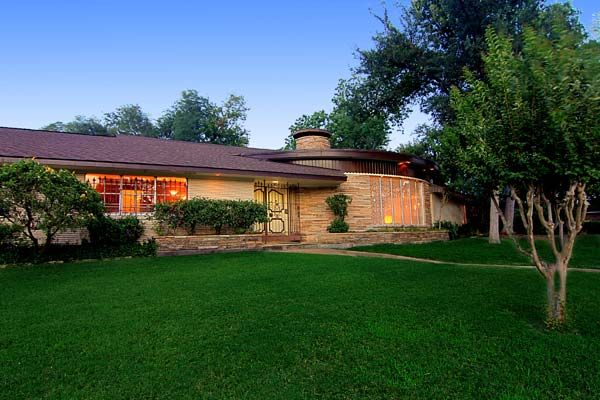
Population: About 3,140 in Glenbrook Valley; about 2.15 million in the city of Houston
House styles: American ranch, mid-century modern
Expect to pay: Less than $100,000 for a smaller ranch needing work; up to $300,000 for a mid-century-modern sparkler
The word swanky comes to mind when you survey the daring roof lines and sweeping lawns of Glenbrook Valley, a neighborhood that would have tempted Mad Men’s Don Draper had he landed a Big Oil account. This planned community, which was rolled out after Houston’s Gulf Freeway began funneling downtowners to greener subdivisions, contains more than 1,200 houses built between 1953 and 1962. Noted landscape architects Hare and Hare, who lent their genius to many of the city’s public spaces, designed the development, which boasted big lots on which buyers custom-built their dream homes—no two are exactly alike. “Our homes are our hangouts. They were designed for entertaining,” says resident, Realtor, and de facto area historian Robert Searcy, who adds that common features include party rooms and built-in martini bars. Many old-guarders live on here happily, serving the Civic Club. But since 2011, when Glenbrook Valley was anointed as the first post-war historic district by both the City of Houston and the State of Texas, the neighborhood has been discovered by design-savvy young Houstonians with a surprising appreciation for 1950s-era powder-pink bathroom tile. You’ll have to fight them to get a piece of the action here.
Among the best for: Editors’ Picks, The South, Bargains, Fixer-Uppers, Easy Commute, Retirees, First-Time Buyers, Gardening
Danville, Virginia
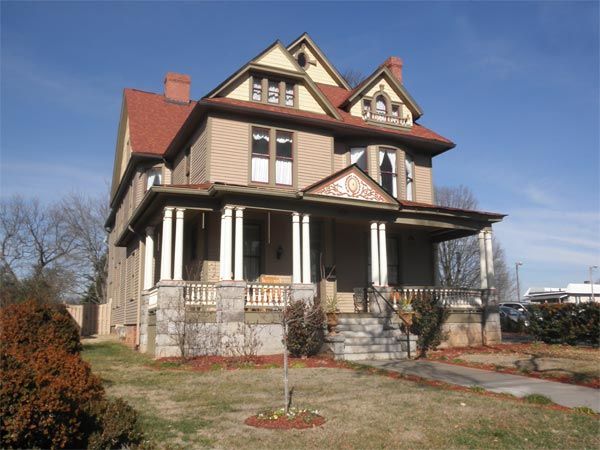
Population: 42,852
House styles: A high-low mix of stately Victorian-era and Edwardian houses, Craftsman bungalows, and workers’ cottages
Expect to pay: Houses needing work can be had for as little as $10,000; you’ll pay about $150,000 for a move-in ready place
Danville, a city founded on tobacco in 1793 that later added textiles as a major industry, was once a wealthy trading hub on the North Carolina border. Its richest residents lived in the ornate Victorian-era mansions lining Main Street’s Millionaires’ Row; one of these houses even served briefly as the capitol for the Confederate States during the Civil War. But the area’s fortunes dried up as the textile mills closed down, leaving behind beautiful old bones but little economic opportunity. Though some of its historic buildings have been demolished, community efforts to preserve the downtown River District have taken root in the past few years, and the city is widening sidewalks and spiffing up streetscapes to lure people and businesses back to the area. Most of the Millionaires’ Row houses have been restored, but several other neighborhoods have properties up for grabs at rock-bottom prices, including the Holbrook-Ross Street Historic District, founded in the 1870s by black professionals, and Schoolfield Mill Village, a neighborhood of small workers’ cottages. A case in point: A refurbished 6,000-square-foot Italianate mansion, with seven bedrooms and six baths, that’s listed on the National Register of Historic Places recently sold for only $262,000.
Among the best for: The South, Bargains, Cottages and Bungalows, Victorians, Waterfront, First-Time Buyers, American Heritage
NorthEast Neighborhood, Olympia, Washington
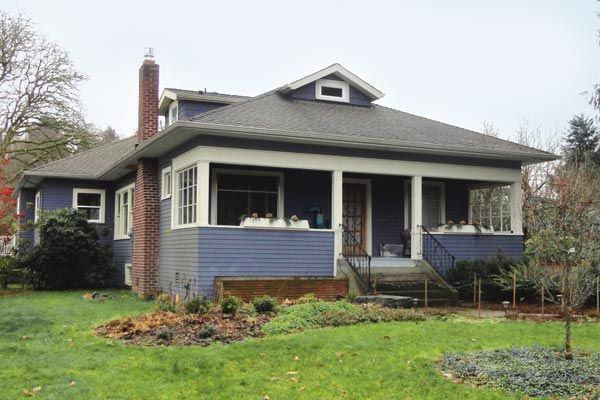
Population: 3,654 in NorthEast; about 47,500 in the city of Olympia
House styles: Craftsman bungalow, Tudor Revival, vernacular farmhouse, World War II–era cottage, and ranch
Expect to pay: $150,000 to $250,000, depending on the house’s size, style, and condition
“We narrowly avoided a bidding war,” says Chrisanne Beckner, an architectural historian and preservation consultant, recalling the nail-biting she and her husband endured in 2011 when buying their 1950 house in this Olympia neighborhood. Despite NorthEast’s abundant selection of intact period houses, and the fact that it’s right next to the city’s treasured Bigelow Historic District, the area lacks its own formal historic district designation; Chrisanne calls it “truly unrecognized.” A pedestrian-friendly 2.4 square miles with views of the Budd Inlet’s East Bay, the neighborhood’s streets are lined mostly with small, simple houses that hail from the 1920s through the 1960s: bungalows, cottages, vernacular farmhouses, and early ranches, all built to last, and many with Craftsman touches and tree-filled yards. These, plus highly rated schools, stable house values, urban gardens, and the lush lawns and picnic areas in nearby Priest Point Park, have lured couples and families to the area in the past couple of years. The cherry on top: The Olympia Heritage Commission, a state-funded organization, offers local homeowners workshops on weatherizing and maintaining historic structures, and the city offers tax incentives for rehabbing period houses. With all it’s got going for it, we suspect this neighborhood won’t remain under the radar for much longer.
Among the best for: The West, Bargains, Cottages and Bungalows, Family-Friendly, First-Time Buyers, Walkability, Gardening
Elkins, West Virginia
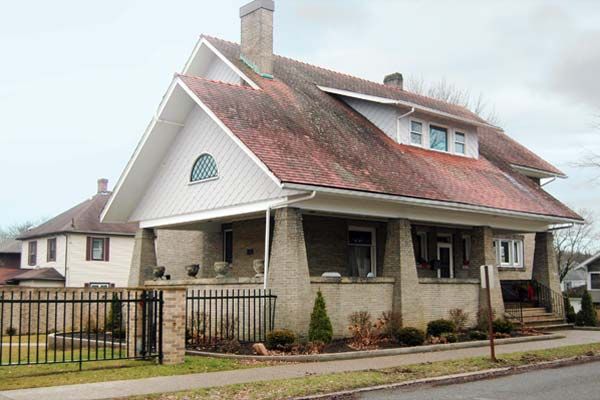
Population: 7,094
House styles: Queen Anne, American Foursquare, and Colonial Revival are the most common
Expect to pay: About $60,000 for a fixer-upper; move-in-ready homes top out at around $170,000
Situated on the outskirts of the Monongahela National Forest, Elkins was founded in 1890 by two U.S. senators and flourished into the mid-20th century as a railroad, mining, and timber town. Though the passenger lines that brought visitors to this temperate riverside city are a thing of the past, locals keep the area’s history alive with the New Tygart Flyer, a vintage passenger train that departs from the city limits and offers scenic rides through the nearby Appalachian Mountains. Several of Elkins’s period houses were built as summer getaways for vacationing families; most were put up before 1930 and are concentrated in the Wees Historic District, which was listed on the National Register of Historic Places in 2006. Residents here—mostly families, retirees, and employees of Davis &Elkins College—enjoy a thriving arts community, including the Augusta Heritage Center, which offers popular workshops celebrating West Virginia’s folk traditions and crafts. Outdoorsy types will find plenty of places to hike, bike, camp, and ski within an hour’s drive. Properties in Elkins are reasonably priced, so you’ll get a lot of bang for your buck here—especially if you’re tackling the renovations yourself.
Among the best for: The South, Bargains, Fixer-Uppers, College Towns, Small Towns, Retirees, Family-Friendly, Parks and Recreation
Victoria-by-the-Sea, Prince Edward Island, Canada
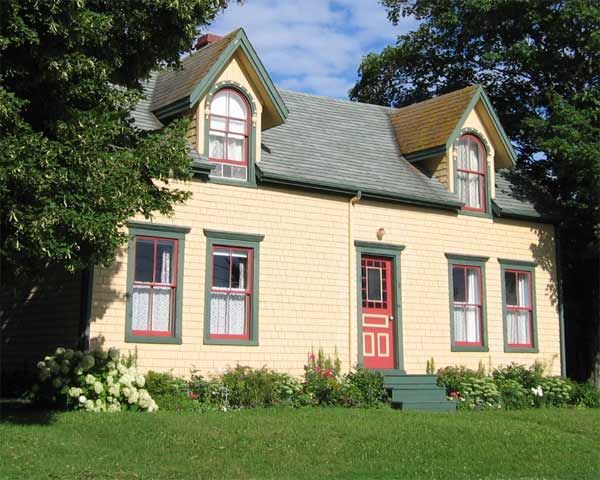
Population: 104
House styles: A hodgepodge of Georgians as well as Victorian-era homes, including a former schoolhouse that was transported from nearby Tryon across the ice by a team of horses in the 1920s
Expect to pay: $140,000 to $175,000 for a period house
Roughly 30 years ago, serenity-seeking city dwellers began moving to this tiny, idyllic hamlet, where extended families still live within whistling distance of one another. Founded in 1819, Victoria-by-the-Sea benefited from a sheltered harbor and a strategic location on the Northumberland Strait, which helped it grow into a thriving seaport by the latter half of the 19th century. The waters are quieter these days, but tourists are still drawn to this area and its maritime history. Although downtown is a mere two blocks long, it offers a lot: seafood restaurants, an art gallery, a chocolate factory, a cafe, a teahouse, and the 1915 Victoria Playhouse, once a community hall and now a live-performance venue. In the summertime, the population doubles with an influx of summer residents, who take advantage of kayak and bicycle rentals and, at the end of Main Street, a public beach. Houses sit on small lots, but none of their owners mind—it’s the kind of place where you know all your neighbors, anyhow.
Among the best for: Canada, Bargains, Waterfront, Small Towns, Retirees, First-Time Buyers
Moose Jaw, Saskatchewan, Canada
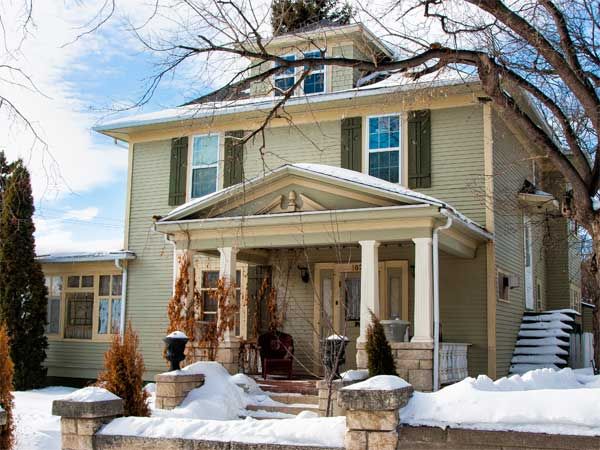
Population: 34,421
House styles: Craftsman and Queen Anne are predominant; Shingle-style and Prairie houses and vernacular bungalows are scattered throughout
Expect to pay: $100,000 to $200,000 for a fixer-upper; a renovated house can cost up to $300,000
There are many theories as to how Moose Jaw got its colorful name; it may have come from a Cree or First Nations word that was transliterated. But no matter its origins, locals make the most of it, with the town’s mascot, Mac the Moose, standing 32 feet tall in his cement-and-steel glory just outside the visitors’ center. The city first flourished in the late 19th century, when it became a stop on the Canadian Pacific Railway in 1883 for transporting goods, and it experienced a commercial and industrial boom in the decades that followed. Rail transit is still a major industry here, along with oil, agriculture, and salt mining. Lately, tourism has been making a mark. Local attractions include underground tunnels used for rum-running during Prohibition, geothermal springs that feed mineral water to area spas, and the Saskatchewan Festival of Words, which draws notable authors and visitors for workshops and lectures each summer. The history and heritage of this family-friendly town are reflected in a series of 40 colorful murals, painted on public buildings, that depict scenes from various moments of Moose Jaw’s past. Many of the houses built in the earliest years are still in good shape, especially along the Avenues, an 18-block area near Main Street. And house prices are fairly reasonable, especially for those that need work.
Among the best for: Canada, Bargains, Fixer-Uppers, Family-Friendly, First-Time Buyers